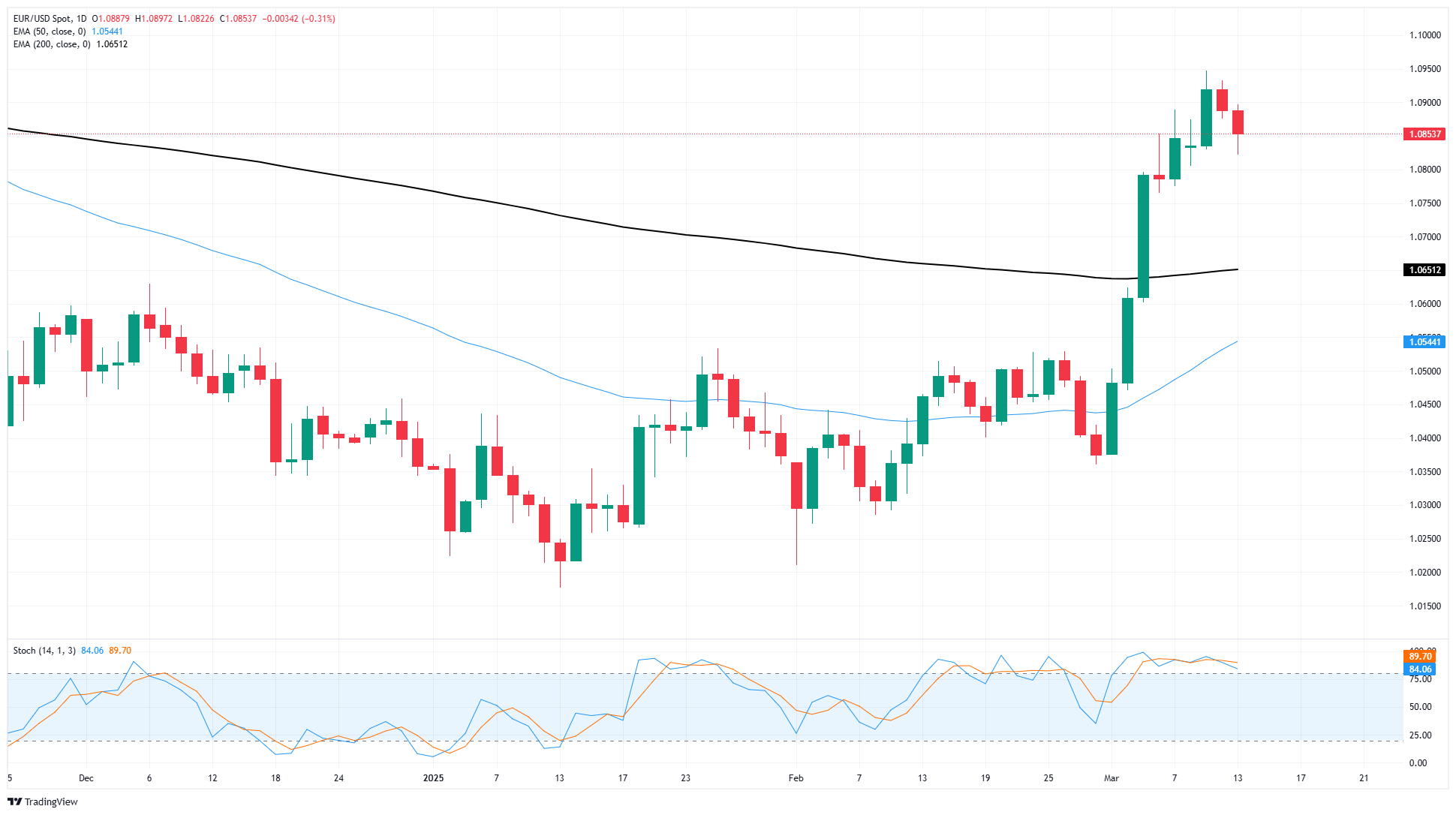EUR/USD retreated 0.3% on Thursday as Europe was included in Trump’s tariff list.
Trump plans to impose more tariffs on targeted EU goods as Europe retaliates against steel tariffs.
US consumer confidence and inflation expectations dominate Friday’s data schedule.
EUR/USD further pared its recent gains on Thursday, retreating about a third of a percentage point as Europe prepares for a long trade tariff game with US President Donald Trump. The Trump administration has initiated a 25% global import tax on all steel and aluminum entering the United States, sparking a wave of retaliatory tariffs from most of the United States’ (formerly) closest trading partners. The European Union has announced a series of tariffs on key US products, notably Harley-Davidson motorcycles and American distilled whiskey, which triggered an angry response from President Trump on Thursday.
Donald Trump’s threat via social media in early US trading on Thursday to impose tariffs of up to 200% on all European wine and champagne has sparked widespread market concerns about the potential disastrous results of the Trump administration’s clumsy trade policies, which do not seem to be fully working or intended. US markets now turn to Friday’s consumer confidence and inflation expectations data, which come at a time when ordinary US consumers are increasingly concerned about the rhetoric leaking out of the White House and Trump’s social media accounts.
German Harmonized Index of Consumer Prices (HICP) inflation data for February will be released early on Friday, however the final non-preliminary data is unlikely to attract much attention. On Friday, the US data schedule will end with the University of Michigan Consumer Confidence Index and the University of Michigan Consumer Inflation Expectations, which is a relatively data-rich week overall. Both data are likely to be negatively affected by President Trump’s tariff rhetoric, with the median market forecast suggesting that the consumer confidence index will fall to 63.1 in March, down from 64.7 in February. In the last survey, the average consumer respondent expected 5-year inflation to reach about 3.5%, which means that inflation expectations are still well above the Federal Reserve's (Fed) 2% target.
EUR/USD looks like its recent bull run has come to an end, confirming a technical retracement below 1.0900, just as it initially broke through this important mark quickly. However, EUR/USD rebounded nearly 7.6% from its recent major low of 1.0175, with bulls easily breaking through the 200-day exponential moving average (EMA).
EUR/USD now faces technical resistance from the 1.0900 mark, a technical area that confused euro bulls in October and November last year.

The Euro is the currency of the 19 European Union countries that belong to the Eurozone. It is the second most traded currency in the world after the U.S. dollar. In 2022, the Euro accounted for 31% of total foreign exchange transactions, with an average daily turnover of more than $2.2 trillion. EUR/USD is the world's most traded currency pair, accounting for about 30% of all transactions, followed by EUR/JPY (4%), EUR/GBP (3%) and EUR/AUD (2%).
The European Central Bank, based in Frankfurt, Germany, is the reserve bank for the eurozone. The ECB sets interest rates and manages monetary policy. The ECB's main task is to maintain price stability, which means either controlling inflation or stimulating growth. Its main tool is to raise or lower interest rates. Relatively high interest rates - or expectations of higher interest rates - are generally good for the euro, and vice versa. The ECB's Governing Council meets eight times a year to make monetary policy decisions. Decisions are made by the presidents of the eurozone's national banks and the six permanent members, including ECB President Christine Lagarde.
"Eurozone inflation data, measured by the Harmonized Index of Consumer Prices (HICP), is an important econometric indicator for the euro. If inflation is higher than expected, especially above the ECB's 2% target, the ECB will have to raise interest rates to control inflation. Relatively high interest rates compared to other countries are generally good for the euro because it makes the region more attractive as a place for global investors to put their money. ”
Data released can measure the health of the economy and can have an impact on the euro. Indicators such as GDP, manufacturing and service PMIs, employment and consumer confidence surveys can all affect the direction of the euro. A strong economy is good for the euro. Not only will this attract more foreign investment, it may also encourage the European Central Bank to raise interest rates, which will directly strengthen the euro. Otherwise, if economic data is weak, the euro may fall. Economic data from the four largest economies in the eurozone (Germany, France, Italy and Spain) is particularly important because they account for 75% of the eurozone economy."
"Another important statistic for the euro is the trade balance. This indicator measures the difference between a country's export revenue and import expenditure over a given period. If a country produces popular exports, then its currency will gain value purely from the additional demand created by foreign buyers seeking to purchase these goods. Therefore, a positive net trade balance will strengthen the currency and vice versa."